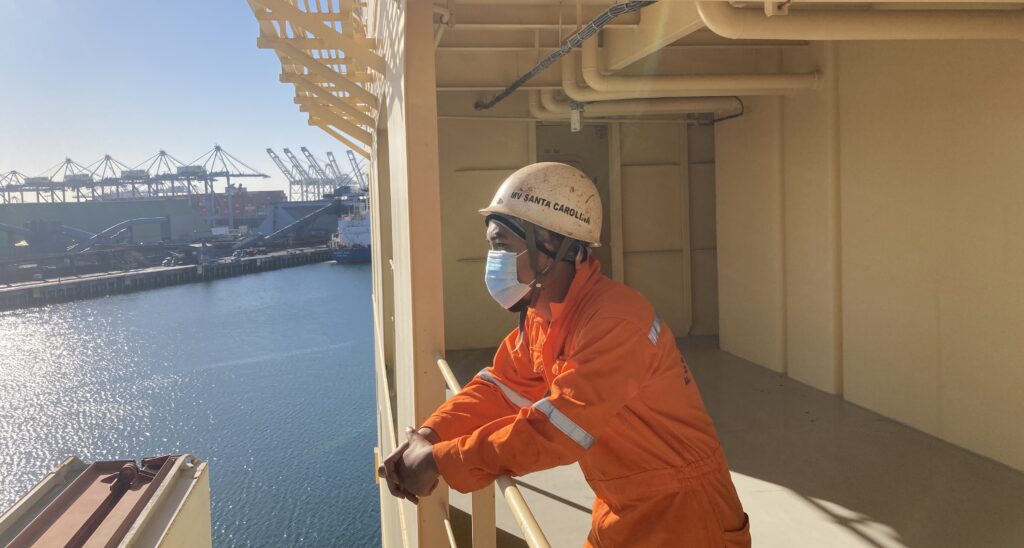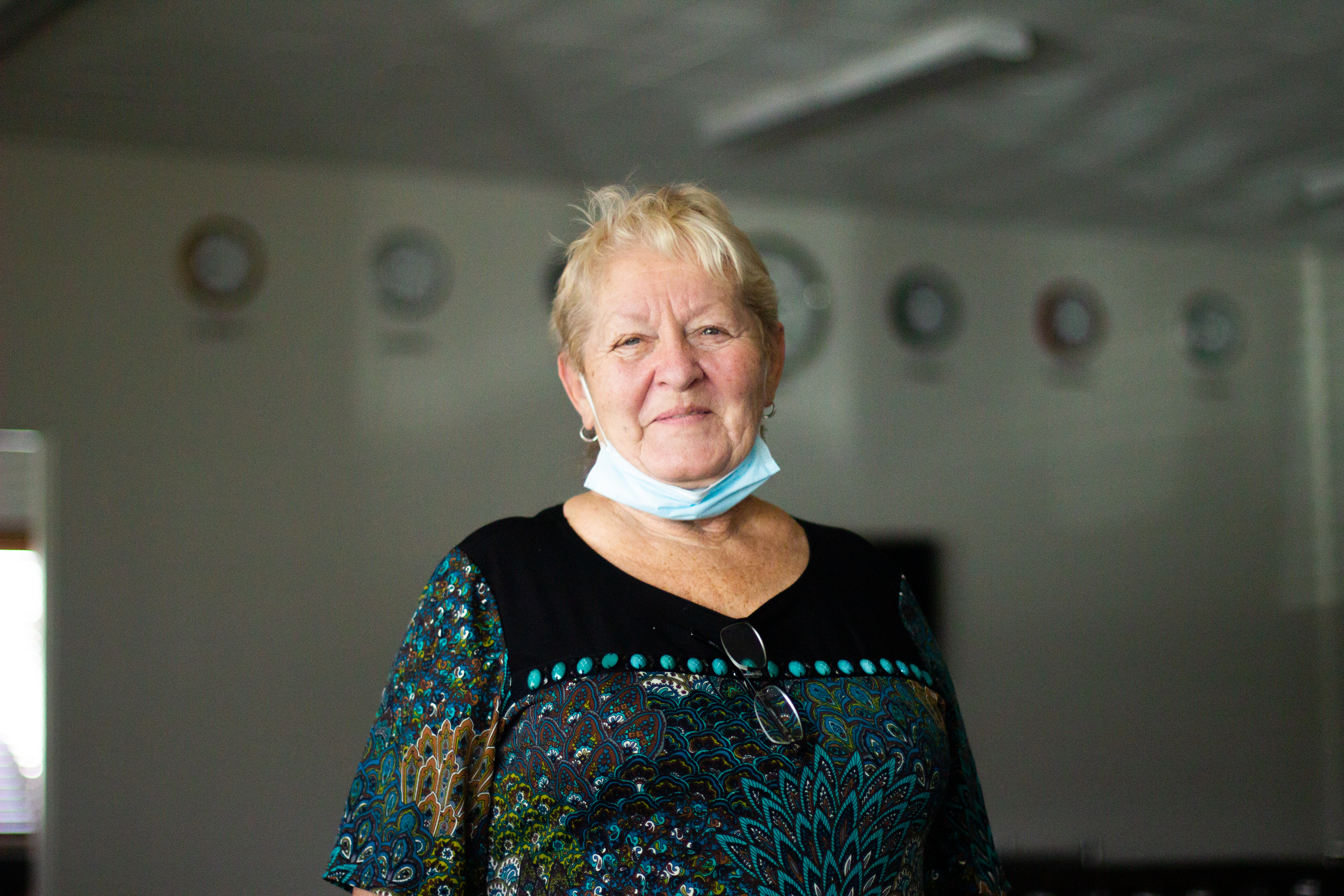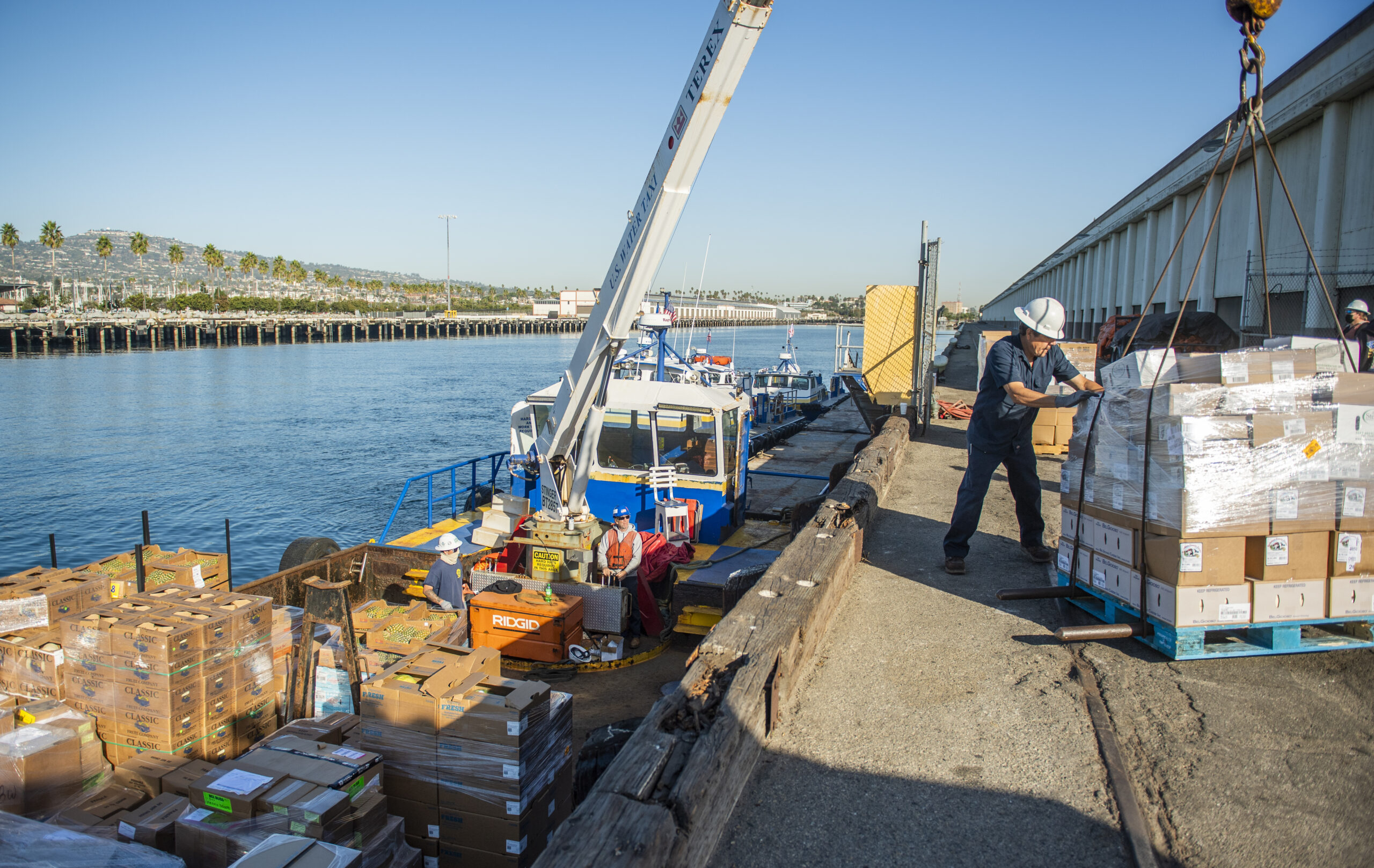
To Pat Pettit, the 72-year-old manager of the International Seafarers Center, the crew members who visit the landside center at the Port of Long Beach for a place to sleep, a meal or to watch a baseball game are almost like extended family, adopted sons. But recently, she’s seen a lot less of them.
“Normally, we’re at capacity,” Pettit said of the center. Now, the pool table in the common area hides under a plastic cover, a pair of electric massage chairs sit empty in the corner and the lights are out at the center’s small convenience store.
Foreign sailors, usually common visitors at the center, are nowhere to be found.
Travel restrictions that prevent foreign nationals from entering the U.S. amid the COVID-19 pandemic, coupled with a clogged supply chain, have left hundreds of seafarers stuck at sea aboard cargo vessels, unable to visit the center. But beyond missing out on the comforts Pettit and her colleagues can provide, the consequences of their predicament can be dire.
Crammed in close quarters with nowhere to go, fights among crew members have become a regular occurrence. Seamen report feeling depressed. Some ships run low on provisions.
“Lately, I’ve just been putting out fires everywhere,” said Stefan Mueller-Dombois, an inspector with the International Transport Workers Federation (ITF), who’s tasked with investigating potential mistreatment of crew members.
At the time of the interview, Mueller was waiting for a ship anchored in the bay to come ashore so he could investigate allegations of a captain hitting a crew member over the head with a telescope. A sailor on another ship complained about a lack of food and a captain who refused to allow vaccinations on board. Several sailors had to be taken to the doctor’s office with severe stomach issues in recent weeks, Mueller said.
In addition to conflicts on board that can quickly turn violent, medical issues are often the reason crew members reach out, according to Mueller. Stomach issues are common, likely a result of the added stress, he noted. “It seems more dire now than ever,” the inspector said.
Crew changes, which allow seafarers a break in between deployments, have been delayed during the pandemic, meaning many crew members have to withstand that stress for longer periods of time.
Normally, seafarers are supposed to return home after 11 months on board, a requirement set forth by the Maritime Labor Convention. But travel restrictions, quarantine requirements and a limited availability of commercial flights have made crew changes more difficult, creating what many in the industry are referring to as a crisis.
Every month, around 100,000 seafarers need to be changed over from ships once their contract is finished. They then have the right to be returned home at the expense of their employer, but exercising that right has proven extremely difficult during the COVID-19 pandemic, according to the ITF.
As a result, an estimated 400,000 seafarers worldwide were stuck on their ships in January, during the peak of what has been called a crew change crisis, the federation reported. Unable to go ashore in the countries they visit and, at times, unable to return home, sailors can spend months without ever setting foot on land.

Finding out who’s responsible for crew members’ well-being can be difficult, even for a seasoned inspector like Mueller. Shipping lines, shipping agents, crewing companies, individual owners and even flag countries all bear a portion of the responsibility—and the number of actors involved is different for each vessel.
“It really isn’t any single company,” Mueller said. This can leave crews at sea—both literally and figuratively. “They don’t have any help,” the inspector noted. “You can’t really find anyone.”
Being stuck at sea and on board their ship for unusually long periods of time is having an impact not just on seafarer’s physical health, but their mental well-being too, said Chaplain Shekhar “Sam” Chauhan, who has worked with the Seafarers Center for over a decade.
“They feel crammed, they feel stuck,” Chauhan said. Some crew members have reported suicidal thoughts, he said.
Chauhan recalls the case of a captain who lost his father-in-law while he was at sea. The chaplain visited the boat, where the two listened to Indian music—Chauhan, like many sailors, is Indian—and talked. “He needed some company,” Chauhan said. “He needed someone to share a few tears.”
For foreign sailors who are unable to leave their vessel due to restrictions on foreign nationals entering the U.S. during the pandemic, being stuck on board doesn’t just mean a lack of emotional support and restricted access to landside respite like bars, casinos or shopping malls. It also means effectively being stuck at work 24 hours a day, seven days a week.
“They’re never off,” Chauhan said. “Even the rest time is work time.”
Chauhan remembers a visit with a ship cook, who said he missed talking to friends, family, anyone who wasn’t a coworker. “In the vessel, it’s only professional,” the cook told him. While ships ordinarily offer internet access, the quality and speed doesn’t compare to that offered on land, making it more difficult to keep in touch with loved ones back home.
Aboard the Santa Carolina, a bulk carrier that recently docked in Long Beach after spending seven days at anchorage in the bay, crew member Lio-Nick Gierza said he was happy that unlike the previous vessel he was on, the ship had a reliable internet connection, allowing him to chat with his girlfriend and 4-year-old daughter back home in the Philippines.
“It’s so hard,” Gierza, who joined the ship three months ago, said of the separation from his family. “Homesickness: that’s the number one problem of the seafarer.”
For the Santa Carolina’s crew, the ship’s bosun Arvin Cabanig said, the number one problem at the moment is a lack of shore leave. But for the most part, his crew members have taken the restrictions in stride, even those who have family members in the U.S. they’d like to visit, like Cabanig, who has a cousin in Long Beach.
“We want to protect our families,” the bosun said, referring to the risk of potentially contracting and spreading the coronavirus.
To make their stay on board a little more comfortable, seafarers who are unable to leave their ship have a few options at their disposal. Some shop online and have their orders delivered to the seafarers center. From there, center staff bring the items to the dock—candy and socks are among the most common orders, according to the center’s live-in custodian.

“They do a lot of shopping online,” Merry-Jo Dickie, the custodian, said of the sailors.
With the usual trips to local stores off-limits and crews’ time at sea extended, local companies supplying and delivering everything from electronics to provisions have also been flourishing.
Ezequiel Perez, co-founder of Long Beach-based Computer Xpress, said his company’s business has increased by 20% during the pandemic. Computer Xpress sells and rents technical equipment like phones and routers to seafarers.
“The first thing they need is the SIM card,” Perez said. “They’re desperate to get it, because they need to communicate with their family.” Computer Xpress fulfills an average of 15 orders per week, Perez estimated, with each order containing items for several crew members on the same ship.
Requests for deliveries to ships anchored in the bay have also increased, according to José Flores, vice president of San Pedro-based U.S. Water Taxi, which transports provision orders to anchored vessels.
“They need to live off of something,” Flores said of the crew members, whose ships are often stuck just off the coast for days as a result of port congestion, running short on milk, eggs and fresh vegetables.
Flores has spent three decades running boats between the port of Los Angeles and ships at sea, but the current situation is unprecedented, he said. “I’ve never seen it like this before.”
Two bridges over, at the Seafarer’s Center, Pettit keeps busy too, ferrying U.S. sailors to grocery stores for their own speciality provisions or to the airport for their trip home. Soon, she hopes, she’ll be able to do the same for foreign seafarers once again. Until then, her sympathies go out to the sailors stuck at sea.
“I feel so sorry for them,” Pettit said. “It’s like they’re in prison.”
